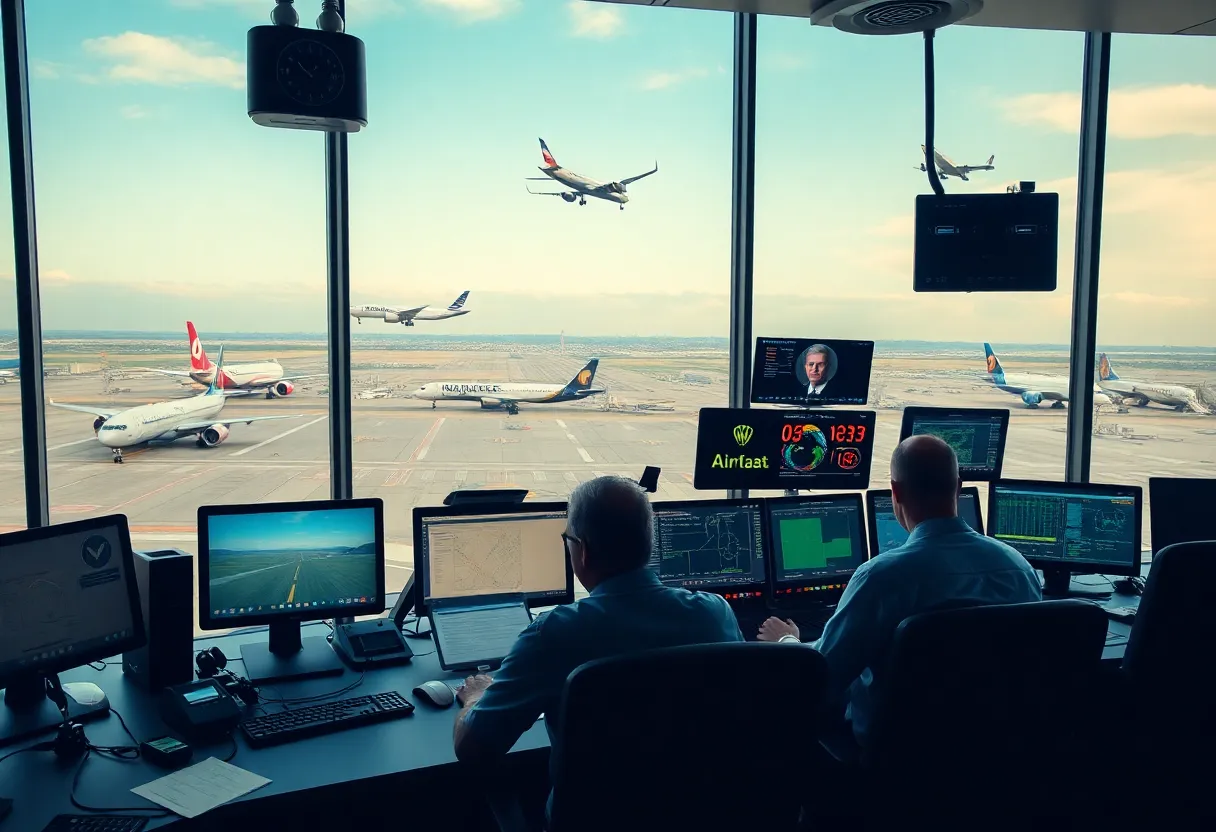News Summary
A recent collision between an American Eagle flight and an Army Black Hawk helicopter has raised alarms regarding the critical shortage of air traffic controllers in the U.S. The New York area is particularly affected, operating at just 58% of necessary staffing levels. As new hires struggle to complete training, the FAA has begun relief efforts, but controller fatigue and unsafe working conditions continue to pose risks. With decreasing numbers in the workforce and an increasing number of close calls, urgent action is required to ensure aviation safety.
Midair Collision Sparks Alarm Over Air Traffic Controller Shortage
A recent midair collision between American Eagle Flight 5342 and an Army Black Hawk helicopter near Reagan National Airport has thrown a spotlight on a pressing issue in U.S. aviation: the shortage of air traffic controllers. This incident serves as a clarion call for better staffing and operational procedures at airports across the nation.
Staffing Levels in Crisis
One of the most alarming aspects of this situation is how staffing shortages are impacting air traffic control towers. In particular, the New York City area is grappling with significant shortages, with one of its main facilities operating at just 58% of the FAA’s desired staffing levels. This is a staggering figure when you consider how critical these controllers are to maintaining safe air traffic operations.
The New York TRACON, located on Long Island, is currently facing challenges in attracting and retaining staff. Since 2019, the facility has seen a concerning trend where 17 new hires either failed to complete training, transferred out, or left the position. Comparatively, the Atlanta facility has had just 8 and Southern California 4 departures in the same time period.
Training New Controllers Takes Time
The training required to become a certified air traffic controller is a long and arduous journey; it typically takes several years, and only about 50% of new hires actually get certified. Given this lengthy process, it’s not surprising that New York is currently hosting the most air traffic controllers in training compared to any other TRACON facility in the country.
Efforts have been made by the Federal Aviation Administration (FAA) to relieve some of these staffing pressures. Recently, the FAA relocated 24 controllers from New York TRACON to Philadelphia in an attempt to shore up support where it’s needed most. Additionally, in 2023 alone, the FAA managed to hire over 1,800 new controllers to combat these ongoing staffing woes.
Fatigue and Unsafe Conditions
But it’s not just the number of controllers that matters; it’s also their well-being. A panel examining controller fatigue after a series of close calls revealed new overtime limits and additional mandatory rest periods. Many controllers have voiced concerns about unsafe working conditions caused by extended hours and fatigue, with low staffing levels leading to dangerous situations that could put pilots and passengers at risk.
Nationwide, only about 70% of staffing targets are filled by certified controllers, with that number increasing to approximately 79% when including those still in training. Certain facilities, including Reagan National, report staffing levels below the target, which raises serious safety alarms.
Reagan National: A History of Close Calls
Reagan National Airport, specifically, is a case in point. The airport has a troubling history, having reported 63% staffing levels and at least 50 incidents requiring evasive maneuvers to avoid collisions over the past decade. An independent safety review has pointed to a combination of air traffic controller shortages, outdated equipment, and inadequate technology as contributing factors to an increasingly “unsustainable” safety environment.
A Declining Workforce
Since 2012, the air traffic controller workforce has plummeted, with around 1,000 fewer fully certified controllers due to retirements and attrition. The FAA’s previous efforts to maintain adequate staffing levels have proven inadequate, especially as many older controllers move towards retirement.
While recent hiring initiatives have been presented as progress, there are ongoing concerns about the potential impact of employment buyouts being offered to controllers, which could aggravate the already dwindling numbers. The previous administration’s deferred retirement program could also pose a threat to any gains made in hiring new staff, leaving the aviation industry under more strain.
Conclusion: A Call for Action
The alarming news from this recent collision is a wake-up call for all of us. With controllers struggling under fatigue and facing an uphill battle to ensure safety, a collective effort is needed to address these staffing shortages before they lead to even more serious incidents. The skies above us deserve our attention; let’s not wait for another close call to take action.
Deeper Dive: News & Info About This Topic
- CBS News: NYC Air Traffic Controller Shortages
- Google Search: air traffic controller shortages
- New York Times: Air Traffic Controllers Understaffed
- Encyclopedia Britannica: air traffic control
- CNN: Air Traffic Control Staffing Nationwide Problem
- Google News: air traffic controllers crisis







